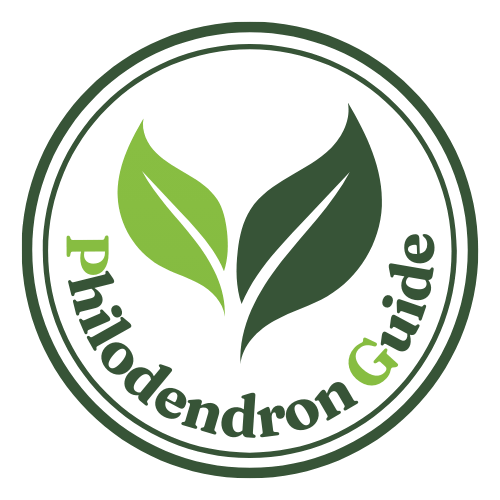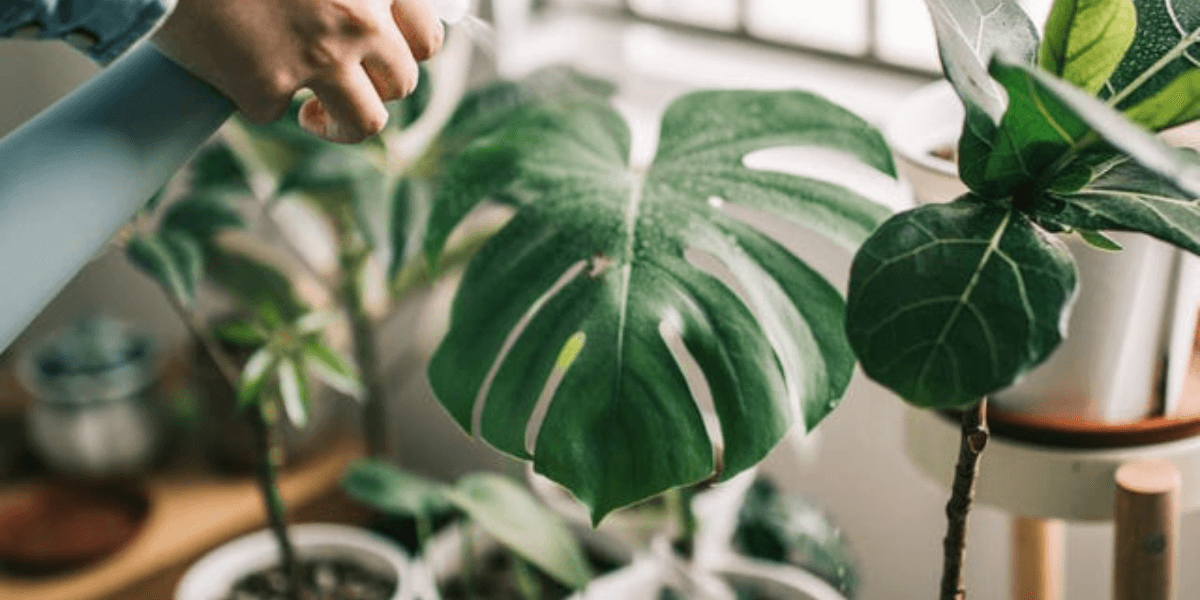Why Indirect Sunlight Is Important for Philodendrons Plants?

Philodendrons are actually quite nice indoor plants because of their green foliage and their friendly care requirements. However, there is one factor that is equally as important that enhances their growth, developing the use of the right kind of sunlight. But what kind of light should it be provided to philodendron plants? The answer is definitely indirect sunlight. In the following article, we are going to focus on indirect sunlight for philodendron plants and its importance as well as how you provision the exact light conditions for them.
Understanding Indirect Sunlight for Philodendron Plants
Indirect sunlight is light that does not directly fall on the plant. In contrast, it, first of all, goes through a reflection or sieve before striking on the plant. An example of this type of light is when the sun’s rays pass through a thin curtain or reflected light from a white wall. Because the sunlight is not as bright as the direct sunlight, it is more pleasant to many house plants, including the philodendrons.
The Reason Behind the Success of Philodendrons In Indirect Sunlight
Philodendrons originated in the central and southern parts of the American rainforest, where they grow beneath the canopy of tall trees. With this environment, they are likely to receive filtered, brighter light. Consequently, philodendrons have developed a characteristic of growing in indirect light which is there natural habitat. In contrast, direct exposure to sunlight can be harsh for the fragile leaves.
Elucidation of the Natural Habitat of Philodendrons
In their natural habitat, philodendrons grow enveloped by the wide branches of the heightened trees and only limited sunlight reaches them. The thinner rays of sunlight which philodendrons like most reach them as they are covered against the sun by the canopy. And like any other plant, when growing these plants in the house, it’s quite crucial to try and provide such conditions.
Indoor Placement: How to Assure Indirect Sunlight for Philodendron Plants
Bringing indirect sunlight into a room is less complex than you may expect. As a rule of thumb, one should establish a bright area in the house where one can put their philodendron without direct sun rays hitting it. A nice trick is to put your philodendron right next to a window, but use see-through drapes to smooth out the light conditions.
Where Indirect Sunlight for Philodendron Plants is Abundant?
Philodendrons perform best when placed in close proximity to windows facing east or north. Gentle morning sunlight enters through east-facing windows while less concentrated light enters through north-facing windows through the day. Either of these two options is ideal for achieving the bright, indirect light required by philodendrons.
Advantages of East Redundant East Facing Windows Last Redundant
The most overshadowed aspects are the wide, drama windows. Money saving wood shutters Fine cabinetry is a cost-effective option although it may be limited. Conversely, westerly windows are highly critical as the sun’s warmth increases over the westerly windows in the late noon. In the case of alpine waving plant positioning, it near so direction a curtain usually is preferable in order to reduce.
Curtains Preventing Curtains Using a Controller and Remote Control for Chile Well
Relatively speaking, one employs curtains when placing a planter there with philodendrons when a planter might actually interfere with direct light. Light filtering fabrics, such as sheer, will soften the scorching light, especially midday light. If looking to also reduce light intensity on your plant, it is also very helpful to have a curtain or blind in front of the window.
Signs Your Philodendron Is Getting the Right Indirect Sunlight for Philodendron Plants
A philodendron that is exposed to an appropriate amount of indirect light will have bold and attractive foliage. The foliage will be dark green in color and the plant will make healthy and stout progress, not lanky. If your philodendron is healthy, it is often a clue that the light provided is sufficient.
Signs of Too Much Indirect Sunlight for Philodendron Plants
Feeling that your philodendron may be receiving too much light will come when you spot your leaves, especially at their tips and dancers covered in yellow or wilting brown. Similarly, the surface of the leaves will form shrivelled, dry or crispy regions. If you see these signs, there is no harm in thinking of redeploying or changing the position of your plant.
Signs of Insufficient light for Philodendron Plants
Philodendrons that have not been exposed to sufficient light will very much be leggy meaning there would be a great distance between the leaves. The leaves will also tend to reduce in size and intensity. If your plant looks like it is growing big and developing a fighting attitude, stretching towards the light, then relaxation is not an option.
How to Adjust Light Conditions for Optimal Growth
Whatever you do, if your philodendron is not doing well, check its light conditions. If the light is less than required, try moving the plant progressively closer to a window. On the other hand, if the light is too much, try shifting the plant further away from the window. Little adjustments are bound to work wonders in the overall wellbeing of your plant.
Best Artificial Light Options for Philodendron Care
In case your house does not get ample light from the sun, it is possible to provide some artificial light to fulfil the needs of philodendrons. The full-spectrum grow lights are very effective since they imitate the rays of the sun and are therefore suitable for growing plants indoors. The grow light should be placed 12 to 18 away from the light and offered for 10 to 12 hours a day.
Seasonal Light Adjustments
It is likely that the amount of natural illuminated area available varies among seasons. In winters, when sunlight levels go drastically down, you may want to bring your philodendron nearer to the window or try and use more artificial lights. Finally, beware of too much light exposure in the summer and change the location of the plant, if appropriate.
Common Mistakes When Providing Light
One common mistake that people tend to make is forgetting that the leaves of philodendrons can get sunburnt and placing them outside in the direct sunlight. Even changing the kind of plant is not enough, because a lot of plants can experience a seasonal deficiency or even overexposure to light. Focus on your plant as much as you can all the time, or at the very least, the majority of time, and modify the factors that need to be changed.
Tips to Ensure Your Philodendron Gets Proper Light
- Position your philodendron in an east facing or north facing window. In this manner, there will be less direct sunlight and greater shaded or indirect light.
- Do put up thin curtains for sun protection so that the leaves do not get scorched.
- Make the position of your plant change once in every two to three months so that it does not grow on one side only.
- Avoid low natural light levels and use additional plant grow lights when there is not enough presence of sunlight.
Key Takeaways for Providing Indirect Sunlight
Philodendrons are relatively easy to grow as long as the house is reasonably bright with bright, indirect sunlight. However, for beginner gardeners of these plants, it is better not to expose them to direct sunlight as this will likely result in leaf burn and this can be mitigated either by appropriate use of window curtains or by positioning the pots of plants adjacent to windows having the right orientation. Therefore, sufficient knowledge of how much light requires your indoor philodendron, as well as good light management will help the plant grow well.
Frequently Asked Questions
1.Why is it stated that philodendrons can tolerate low light conditions ?
Yes they can but as they seem to be this is a lowlight room, they are better in bright indirect light conditions.
2.How do you define the term indirect sunlight?
Indirect sunlight is the light that you transplant under the plant after the light has been diffracted or some other filtration process occurs.
3.Can I leave my philodendron in direct sunlight?
No, as the direct sunlight can burn the leaves and can also scald them.
4.How can I obtain indirect light for my philodendron?
You can use light covering fabrics in order that the sunlight shall pass through or you can place the plant by the east window.
5.How many hours in a day can my philodendron remain in the light?
Bright, true light of indirect nature is required throughout the day, and six to eight hours will do them good.
6.Can I grow my philodendron by a west-facing window?
Yes, as good as it may sound, it’s better because of the afternoon strong light, inspiring the use of a curtain.
7.How does my philodendron x addisonian adjust to low light level conditions?
The cues can be healthy, clear, and even growth patterns as opposed to growth patterns which are indicative of disease.
8.What do you think would occur if my philodendron were subject to too much light?
Some leaves will start developing yellow patches on them, and some parts will turn to brown as though dry.
9.Is it safe for my philodendron plants to be subjected to artificial light?
Indeed it is possible to safely employ light fluorescent and LED grow lights regardless of the fact sunlight is obtainable.
10.Where should I position my philodendron in an apartment?
This should be executed in a place which is to be well artificial lit but still contains at least east or north facing windows.
11.Do the philodendrons have to have sunshine every single day?
Yes, they do need light on regular bases in order to be able to develop well.
12.What could be the reason for the yellowing of my philodendron’s leaves?
Other than leaves themselves, most people assume yellowing means color defects due to improperly light low light exposure.
13.Are philodendrons able to stay in fluorescent light?
There is indeed such a possibility. Their growth can take place even under the fluorescent light.
14.How far from the philodendron should I put the grow lights?
About Twelve to eighteen inches away when placing grow lights for the plant.
15.How often do you think I have to change the position of my philodendron plant?
She should be rotated about once every couple of weeks to ensure that all the sides get a good share of the light.

